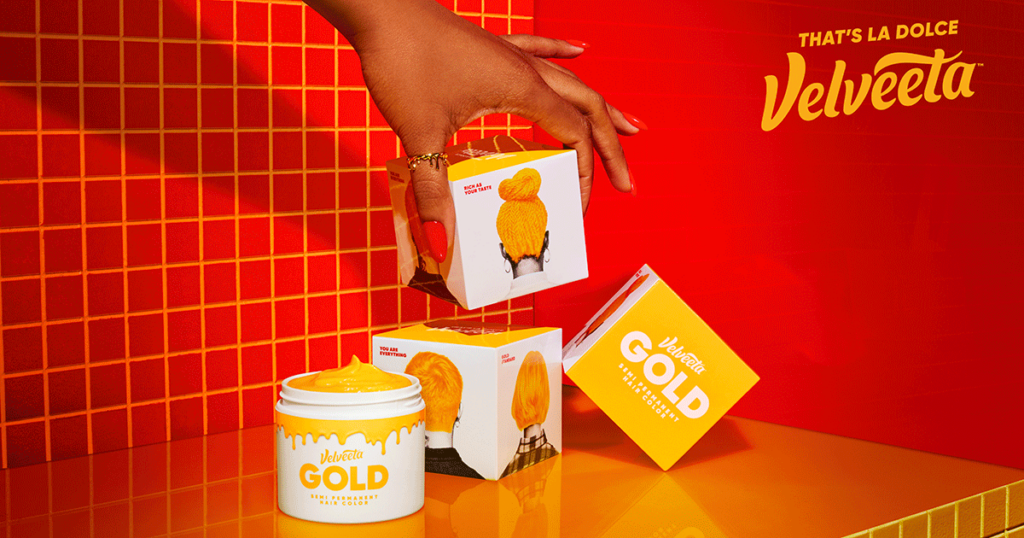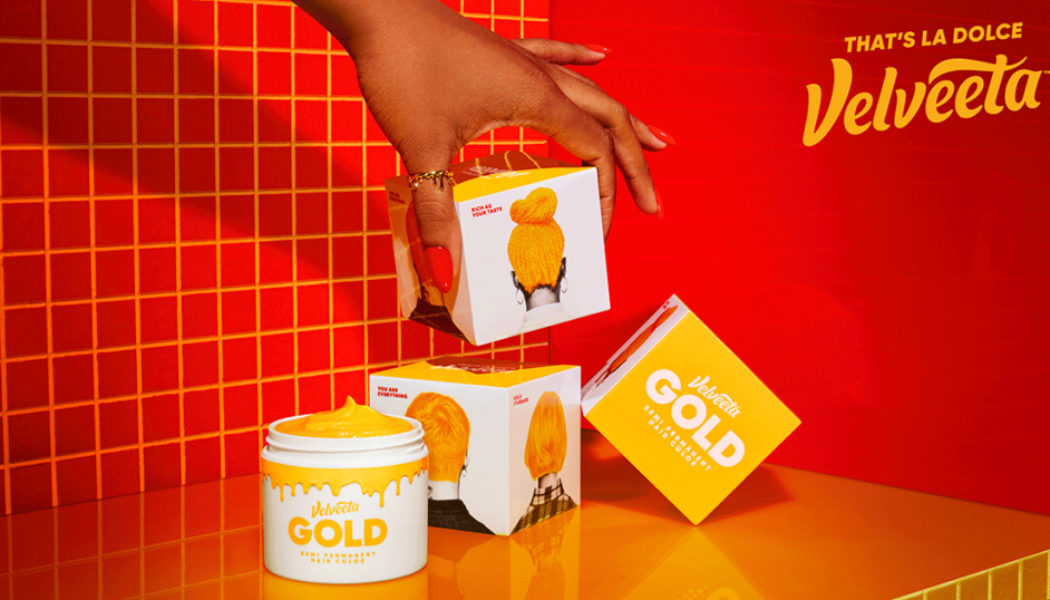Inspiration meets innovation at Brandweek, the ultimate marketing experience. Join industry luminaries, rising talent and strategic experts in Phoenix, Arizona this September 23–26 to assess challenges, develop solutions and create new pathways for growth. Register early to save.
When actress Julia Fox appeared at a New York Knicks game on March 31 flaunting a golden-hued dye job by Velveeta, many people assumed it was another bizarre April Fools’ joke from a brand.
Fox’s unique look attracted paparazzi, generated online buzz and made headlines in entertainment press such as People and E!—the kind of attention that would be any marketer’s dream.
But this was no prank. As Stephanie Vance, Velveeta’s brand manager, told ADWEEK: “We don’t joke about pleasure.”
Velveeta’s collaboration with Fox was the latest in a series of offbeat marketing stunts as part of its “La Dolce Velveeta” platform, which debuted in November 2021. The campaign has taken an unexpectedly glossy and indulgent route—from cheese-flavored martinis to scented nail polish to Federico Fellini-style films—that has seen Velveeta behave more like a lifestyle brand than an old refrigerator staple.
It’s all happened in the name of “encouraging consumers to live for pleasure,” Vance said, with the ultimate goal of becoming relevant again among younger generations. So far, its marketing tactics have paid off and helped reinvent a more than 100-year-old brand.
“We needed to give [Velveeta] a glow up—or a ‘gold up,’” said Vance.

Refreshing a heritage brand
Before it inspired beauty products and cocktails, Velveeta gained popularity in kitchens for its smooth, meltable quality. Swiss cheese maker Emil Frey invented Velveeta in 1918, and Kraft acquired it in 1927.
Marketing messages about the creamy, yellow block of processed cheese have ranged from 1940s ads that promoted Velveeta as a practical and “hearty” product during war time, to a 1950s ad touting its nutrients for “weight-watching” mothers.
The market for processed cheese in the U.S. grew steadily over several decades until its peak in 1996, but then started declining in the early 2000s amid increased awareness of the health effects of processed foods. Velveeta began to position itself more as a side dish or special ingredient, such as the basis for a queso dip at a party or a comforting macaroni & cheese.









